Man And Nature In Manitoba Museum Galleries
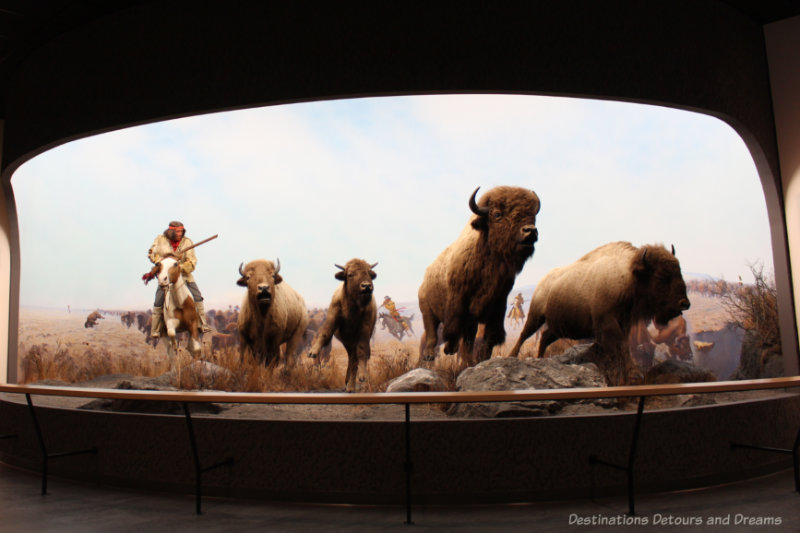
The Manitoba Museum in Winnipeg, Manitoba, Canada showcases human and natural history across Manitoba’s diverse landscapes
Last Updated January 2023
A scene at the entrance to the Manitoba Museum in Winnipeg, Manitoba, Canada depicts a Métis hunter on horseback closing in on a herd of bison. The scene introduces the philosophical theme of the museum: the interrelationship of human beings and the natural environment. Museum visitors travel through millions of years as they go north to south across Manitoba’s diverse landscape. The galleries showcase both natural and human history. The Museum tells the Manitoba story through collections of artifacts, written and audio information, dioramas, and interactive displays.
The Museum first opened in 1970. Galleries have been added and exhibits updated in the 50 years since. The galleries contain rich and extensive collections meaning that multiple visits are never boring. You’re also likely to notice something different each time.
Current galleries are:
- Welcome Gallery
- Earth History Gallery about Manitoba’s geological history
- Arctic / Sub-Arctic Gallery about the landscape, animal life, and human history Manitoba’s north
- Boreal Forest Gallery about the landscape, animal life, and human history of the northerly coniferous forest area covering nearly one-third of Manitoba
- Nonsuch Gallery featuring the story of the Nonsuch merchant ship complete with a replica ship
- HBC Gallery showcasing the Hudson’s Bay Company Museum Collection
- Parklands Gallery about the landscape, animal life, and human history of the mixed woods region of Manitoba
- Prairies Gallery about the landscape, animal life, and human history of southern Manitoba
- Winnipeg Gallery about the city of Winnipeg, Manitoba’s capital and largest city
There are actually three parts to the Manitoba Museum: a planetarium, the Science Gallery which will eventually move to its own stand-alone building as part of the museum’s renewal program, and the Museum Galleries which I am highlighting in this post. You can purchase admission to all three, just one, or any combination of two.
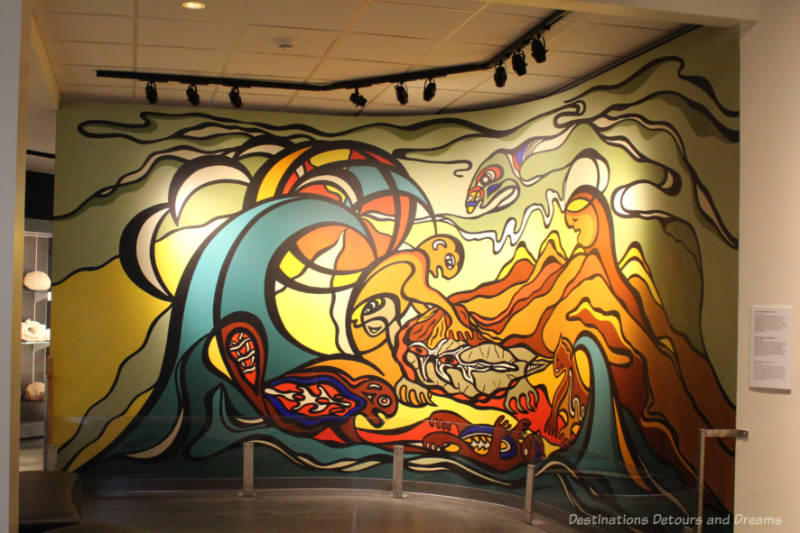
Earth History
The traces of Manitoba’s geological history remain in the fossils of the Ordovician Sea, which covered the province a half-billion years ago. The Earth History Gallery, the first gallery one enters after the Welcome Gallery, focuses on those fossils.
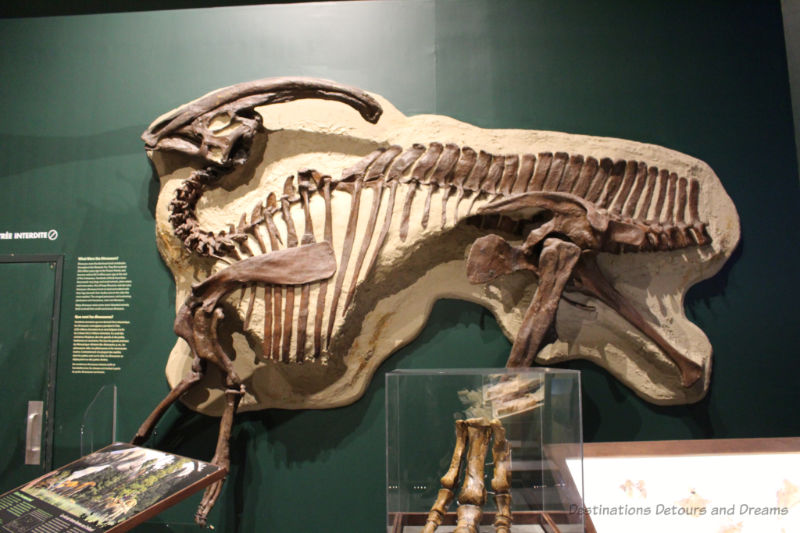
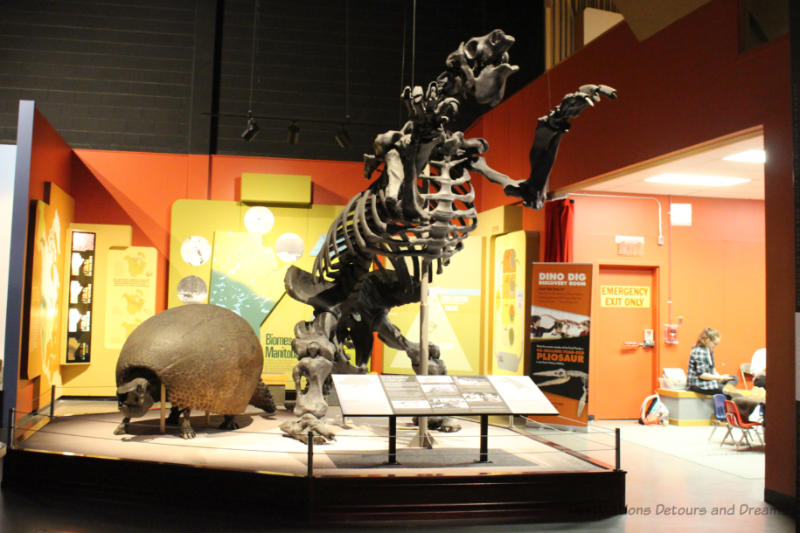
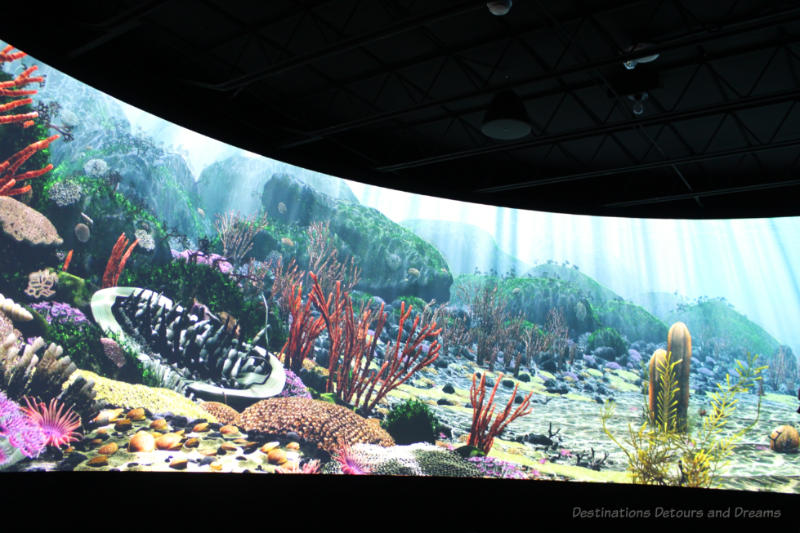
In this gallery you’ll also find information on the geological sediment layers under your feet and an introduction to different biomes found within Manitoba. Four galleries explore the human and natural history within those ecosystems: the Arctic / Sub-Arctic Gallery, the Boreal Forest Gallery, the Parklands Gallery, and the Prairies Gallery.
Manitoba Nature
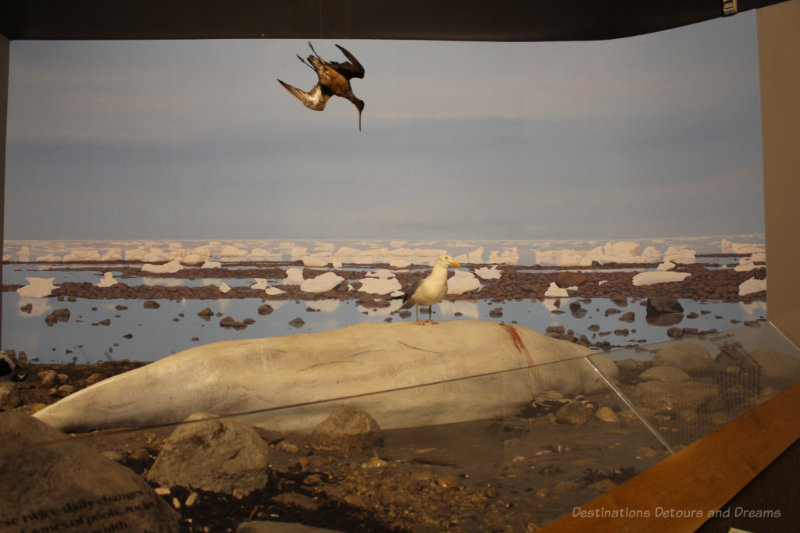
The Arctic/Sub-Arctic Gallery focuses on Manitoba’s north. Manitoba is a maritime province with a marine shoreline along Hudson’s Bay of 645 kilometres. Hudson’s Bay is part of the world’s ocean system. The Arctic region of Hudson Bay is the land of northern lights, Beluga whales, and polar bears. Snow, permafrost, and tides are just some of the topics explored in museum exhibits.
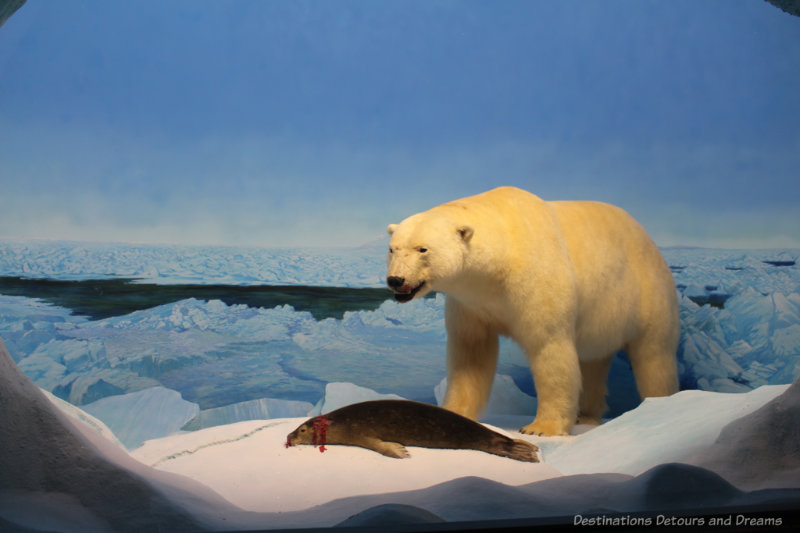
In the subarctic transition zone between the Arctic tundra and the coniferous forests to the south, you’ll find white spruce, black spruce, and tamarack trees, all becoming more stunted and widely spaces as you approach the tree-line. Barren-ground Caribou winter here. Several birds breed in this region of countless lakes.
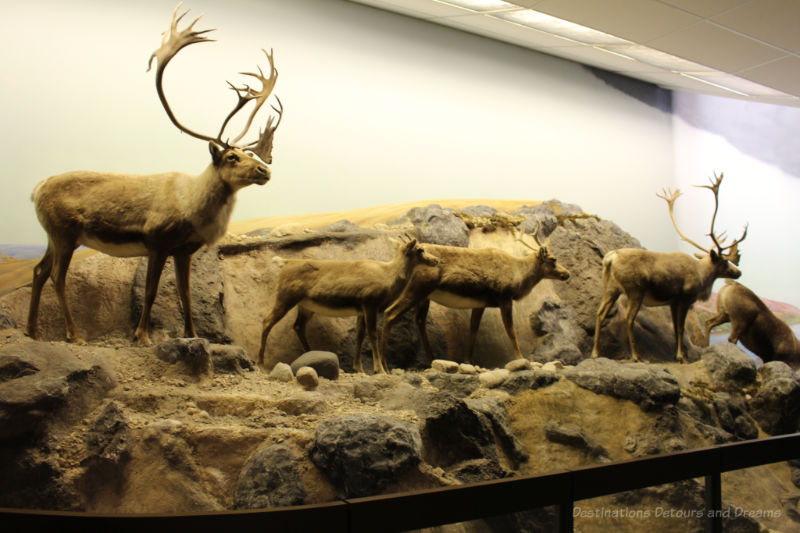
The Boreal Forest Gallery showcases the northerly coniferous forest which covers nearly one-third (164,000 sq km) of Manitoba. This is the land of spruce, pine, willows, birch, moose, black bears, and woodland caribou. Topography varies from level to hilly, with rock outcrops.
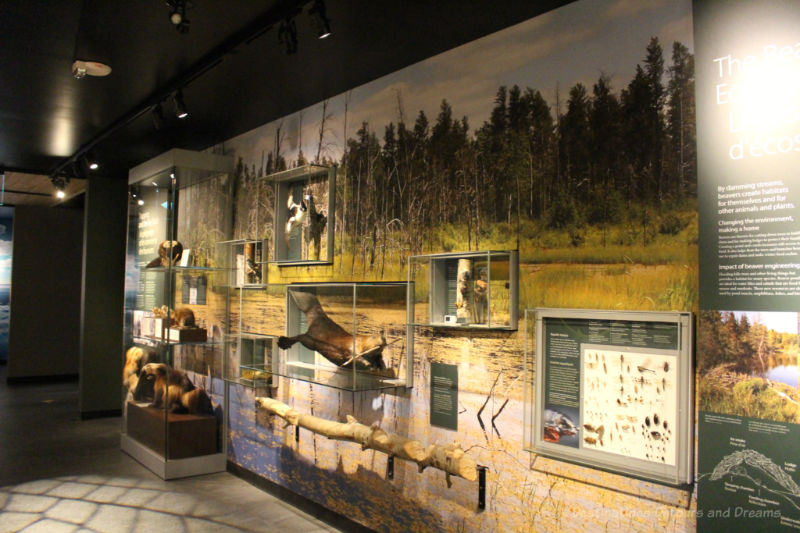
The Parklands Gallery showcases the parklands / mixed woods region of Manitoba, the transition zone between the Boreal Forest to the north and the Grassland plains to the south. Here you’ll find trembling aspen, broadleaf woods, mule deer, and sharp-tailed grouse. This area is home to a larger variety of life and landscapes than any other area of the province.
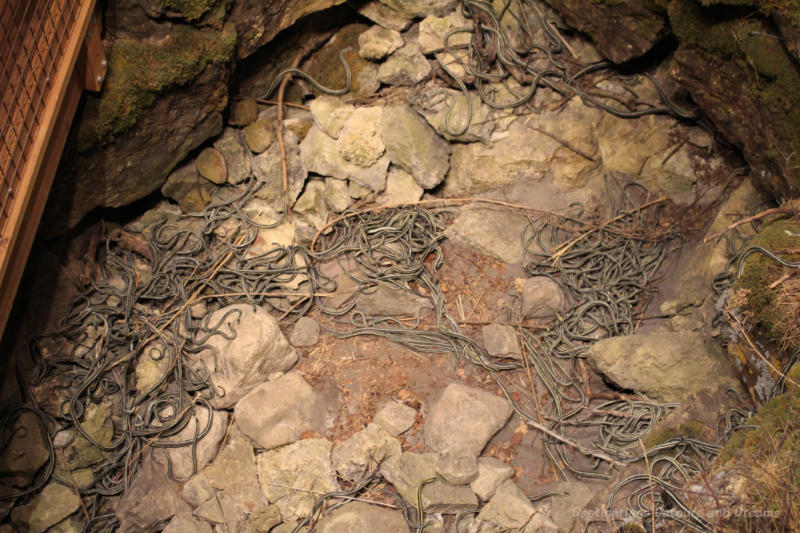
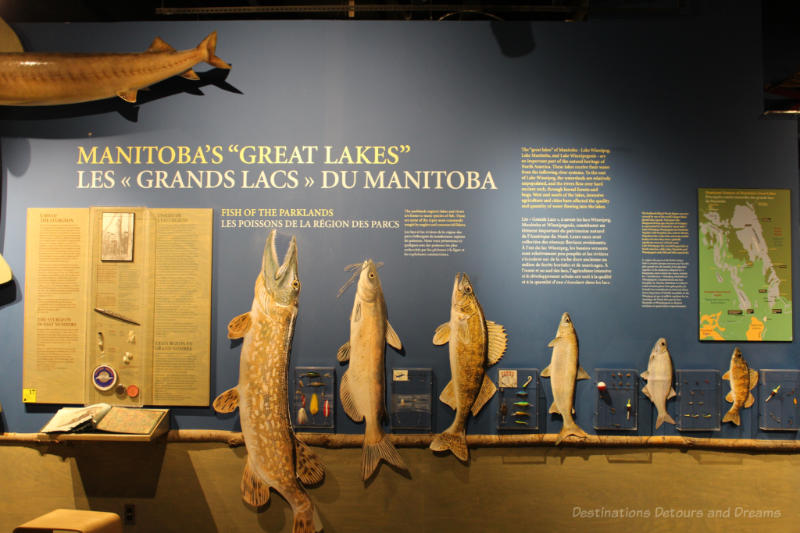
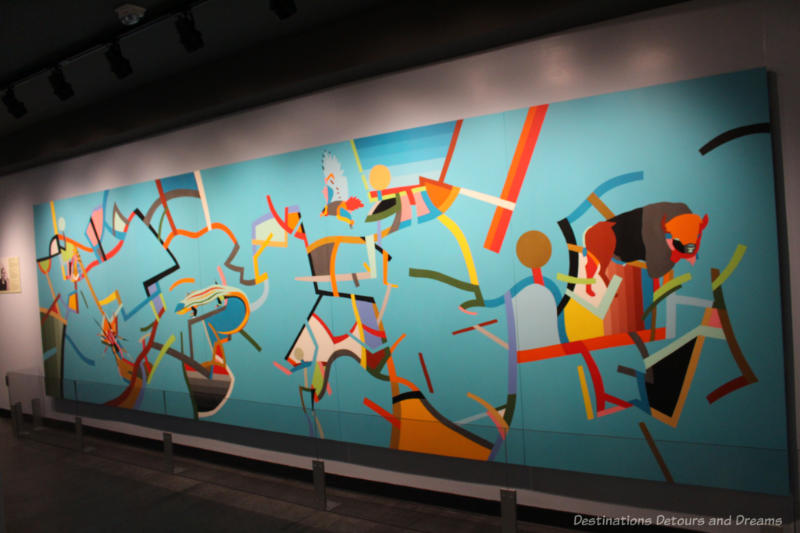
The Prairies Gallery features the southern part of the province where bison once roamed in an area of tall grass and mixed grass prairie.
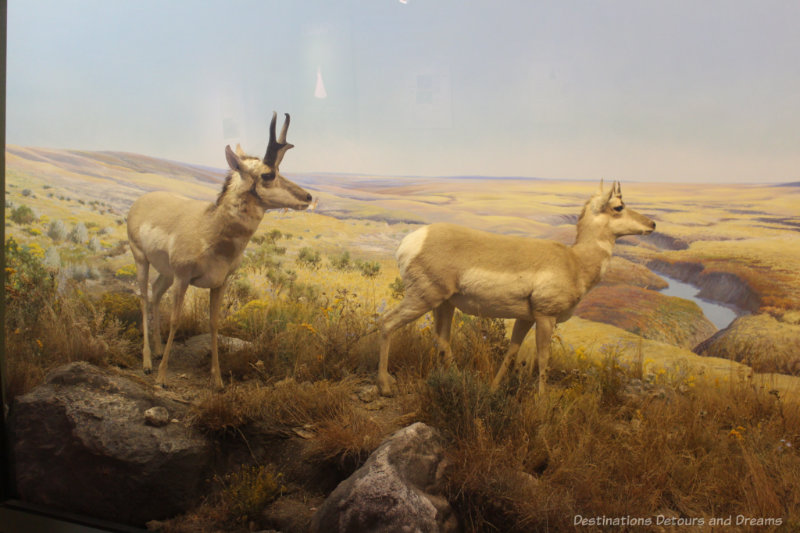
Indigenous Peoples
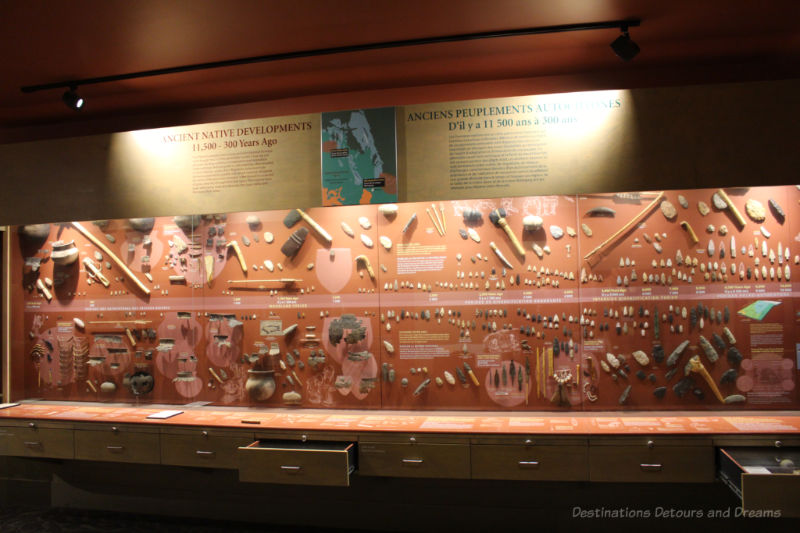
The Manitoba Museum is located on Treaty 1 land, and the homeland of the Métis Nation. These lands, occupied for thousands of years, are the traditional territories of the Anishinaabeg, Inniwak, and Nakota Nations. On its website, the museum says it is committed to collaborating with all Indigenous peoples of the province. Indigenous historical and contemporary stories are found throughout the galleries. Bringing these stories forward is a focus within the renewal project. In recent visits I have noticed new exhibits and updates to older exhibits that better represent Indigenous histories and cultures. Exhibits touch on traditional culture and ways of life, techniques for survival, relationships with the land, art, the impact of the fur trade, and interactions with first immigrants.
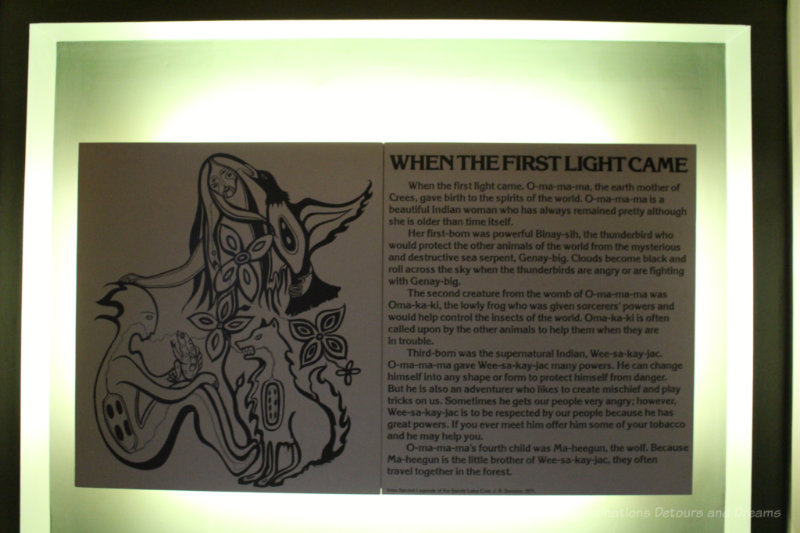
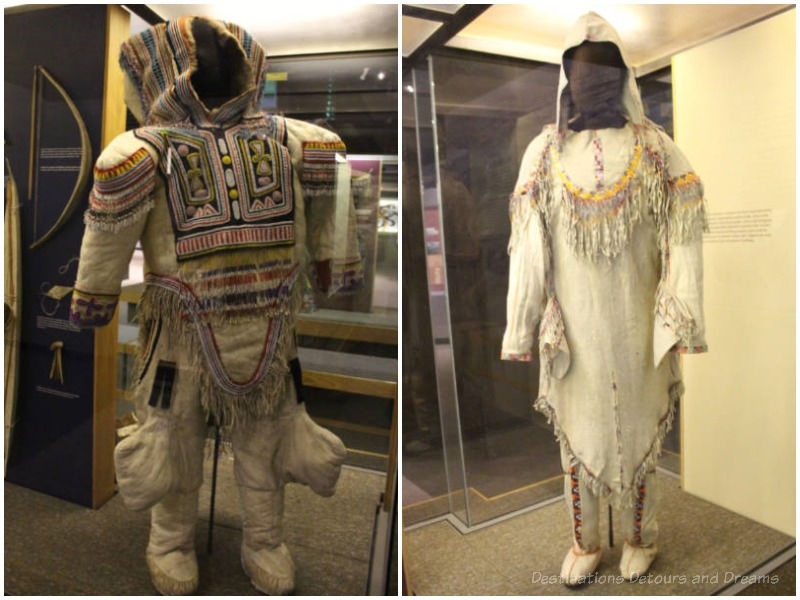
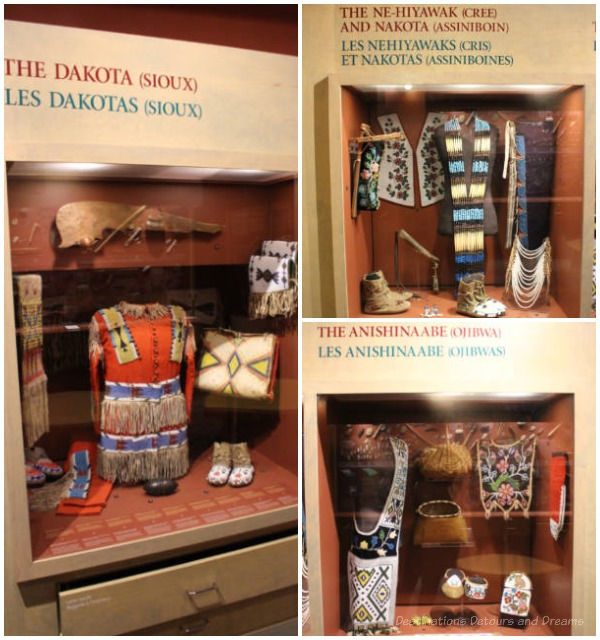
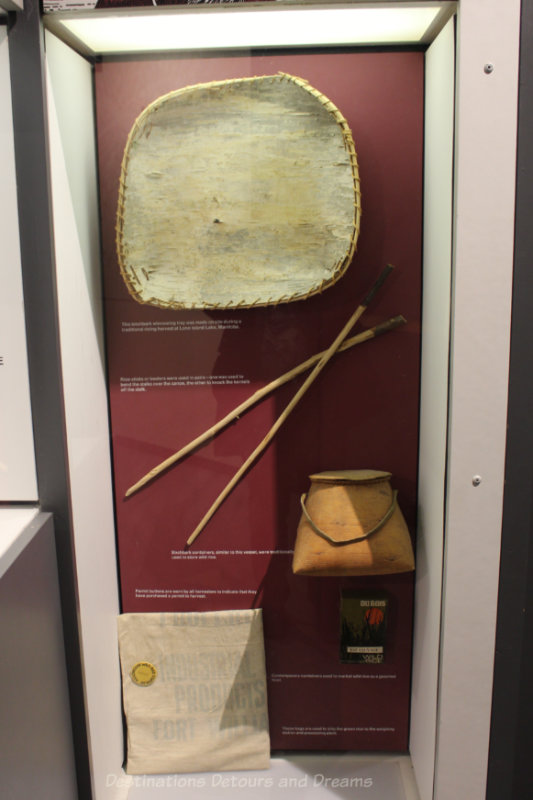
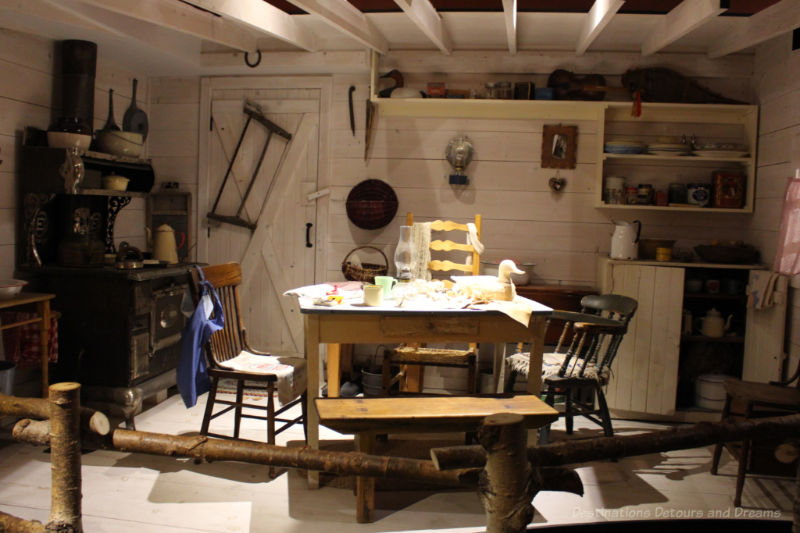
The fur trade brought Europeans to western Canada. Relationships between native women and European fur traders resulted in a growing number of mixed offspring. As this population established distinct communities separate from those of First Nations and of Europeans and married among themselves, a new people arose with their own culture, traditions, language (Michif), and way of life. The Métis Nation was born. Displays about the Métis can be found in the Parkland Gallery.
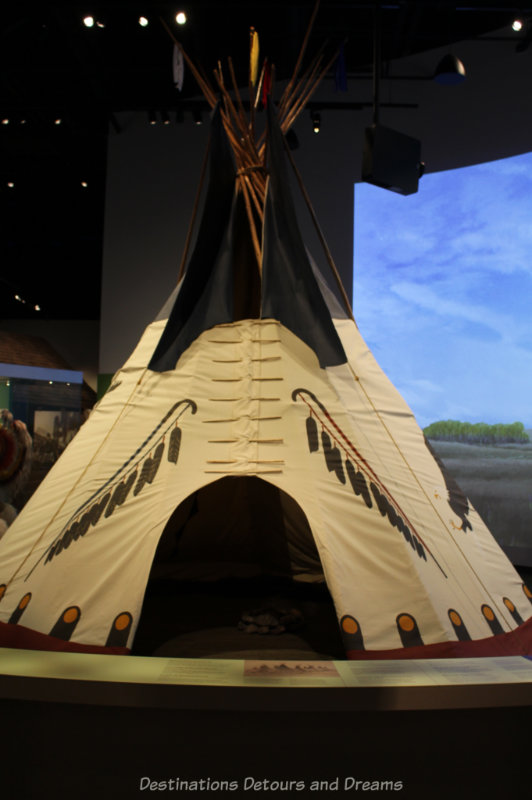
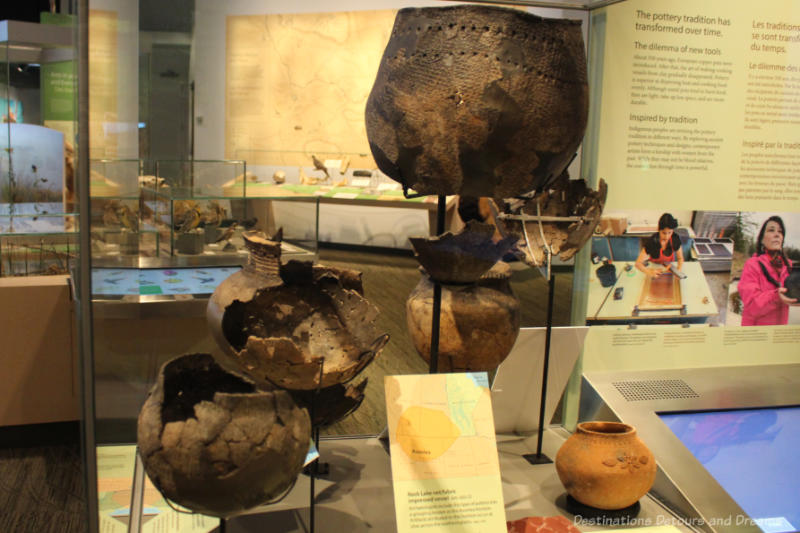
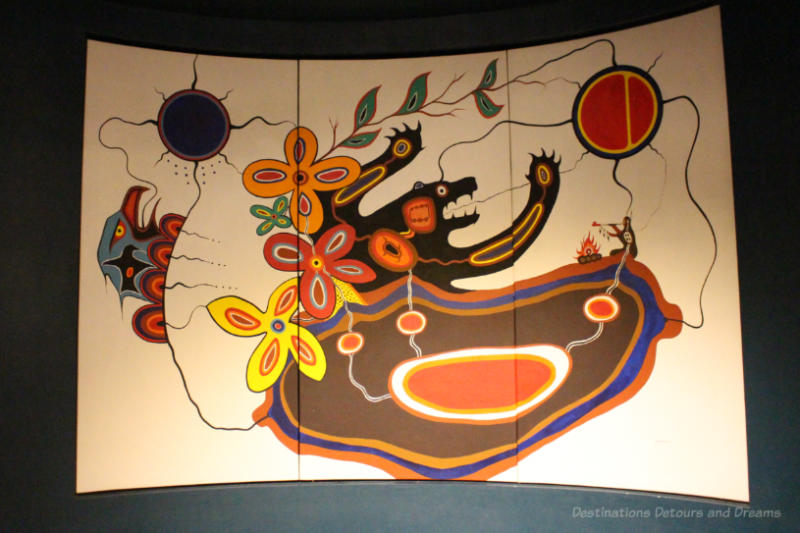
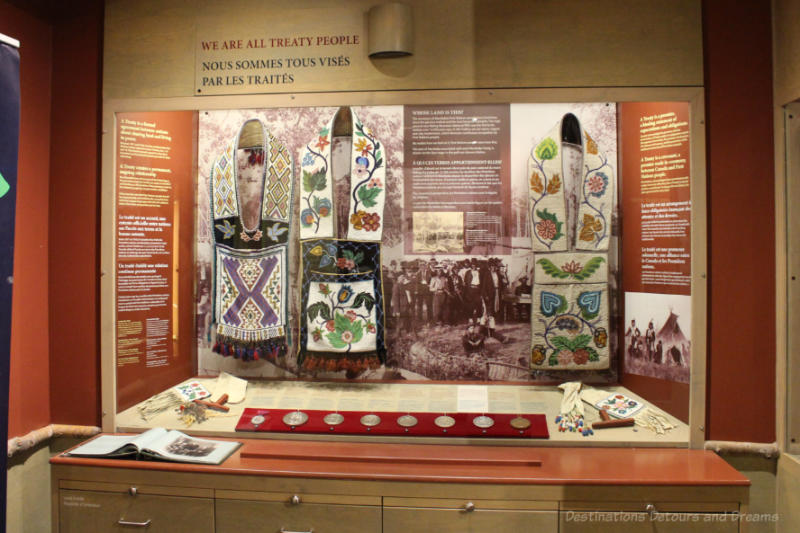
Between 1871 and 1910, Canada and Manitoba First Nations leaders agreed to seven treaties, Nos. 1-6 and 10. First Nations people agreed to share their homeland and Canada promised to provide for their well-being. Many promises made to First Nations people by Canada remain unfulfilled. Displays at the museum provide information on the treaties and the unkept promises, the impact of the 1876 Indian Act and the reserve system, and current steps toward reconciliation.
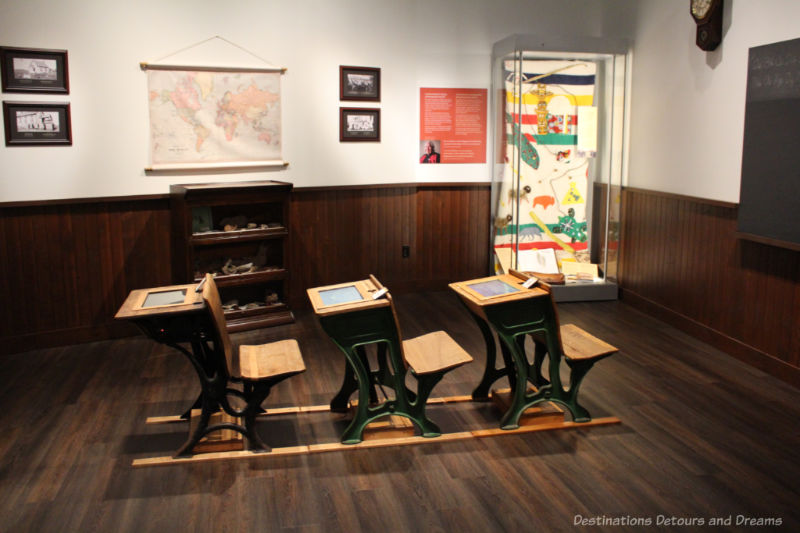
A kiosk in the Prairies Gallery Schoolhouse exhibit contains information about the history and legacy of the residential school system’s forced separation of Indigenous children from their families, culture, and identity.
Settlement And Immigration
The fur trade first brought Europeans to Manitoba. Later, agriculture, land, and other opportunities brought more Europeans and people from other parts of the world. Their histories in Manitoba and their interactions with the land and with indigenous peoples are showcased within the various galleries. The unique nature of each ecosystem shaped those histories in different fashions.
In the Arctic/Sub-Arctic Gallery there is a display about the Franklin Expedition, an 1865 Arctic expedition that went horribly wrong. The building of the railway and the creation of dams for hydroelectric power created changes in the north. Fishing industries developed in areas of lakes. Agriculture played an important role in the south. The Grasslands is the area of Manitoba that has been most affected by human activities.
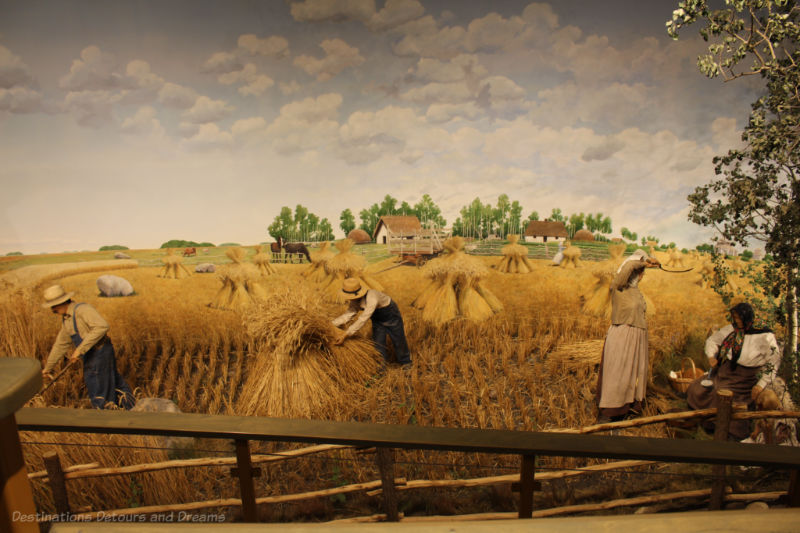
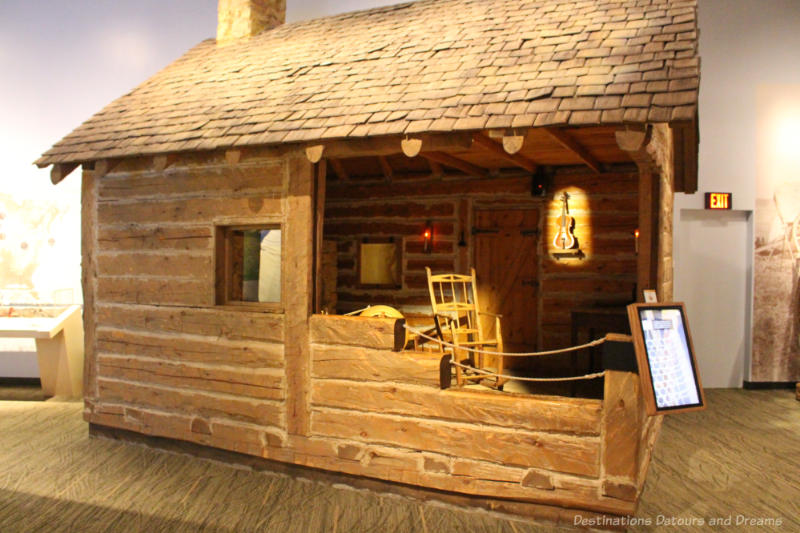
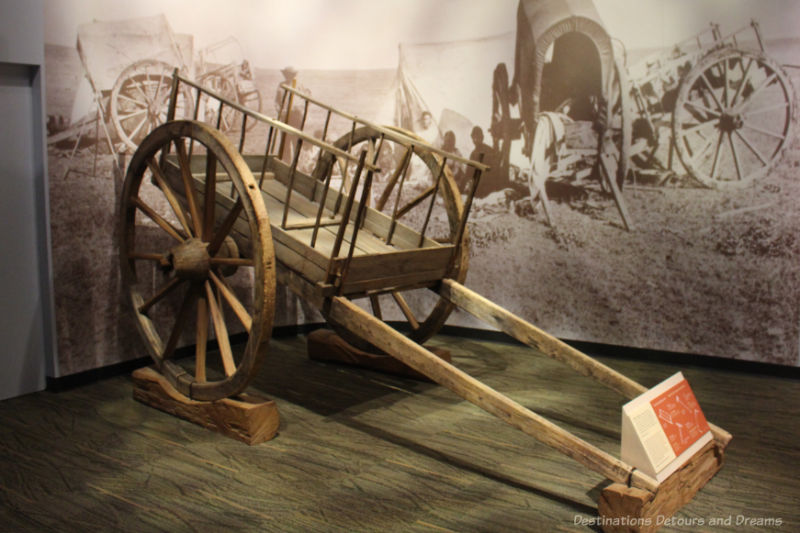
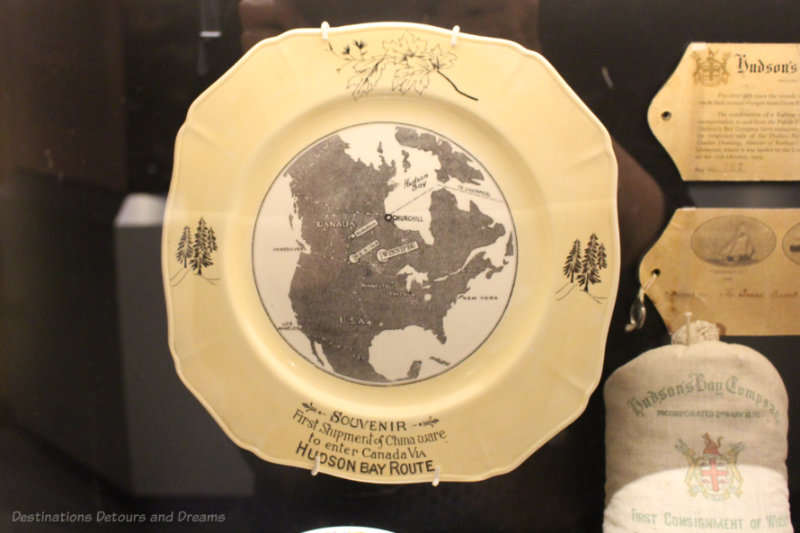
HBC Gallery
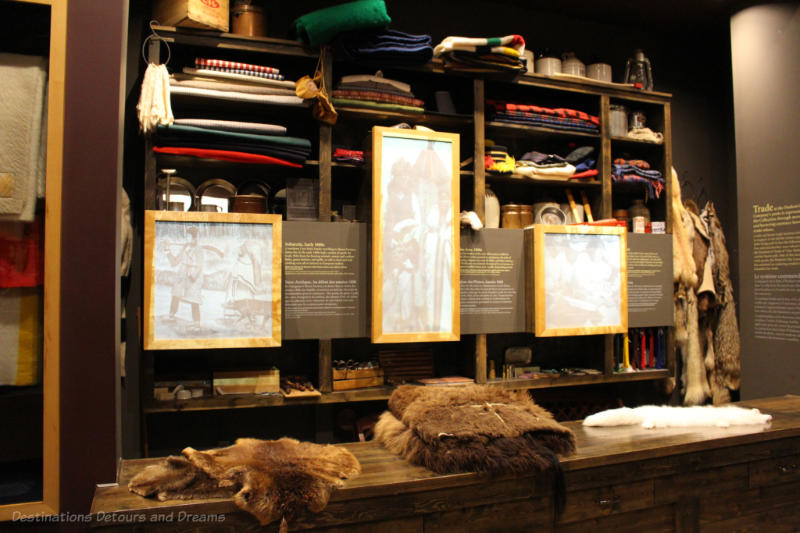
The Hudson’s Bay Company is one of the oldest enterprises in existence. The company was chartered in 1670. It was a fur trading business for most of its history. It had an incredible impact on the history of Canada. The company and its legacy is showcased in the HBC Gallery.
Over the course of the years, the Hudson’s Bay Company acquired a variety of artifacts related to its history as well as art and “curiosities of the country.” In 1994, the Hudson’s Bay Company donated its Museum Collection to the Manitoba Museum. The Hudson’s Bay Gallery opened in 2000.
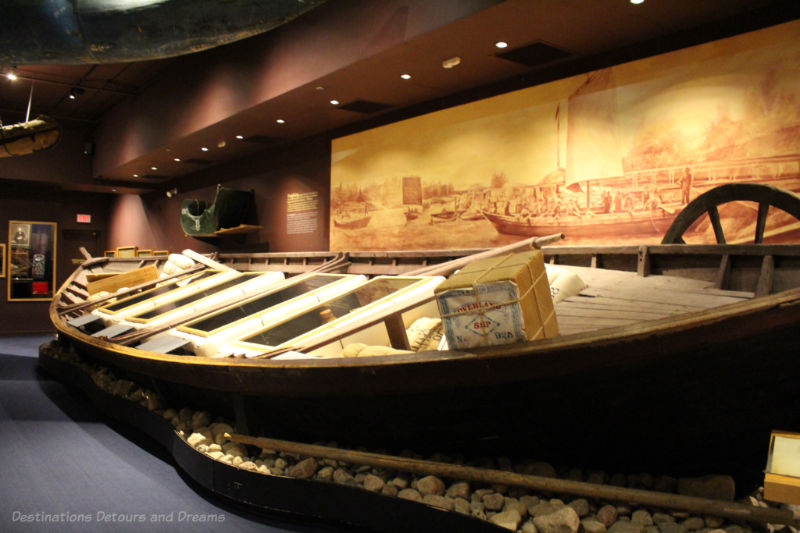
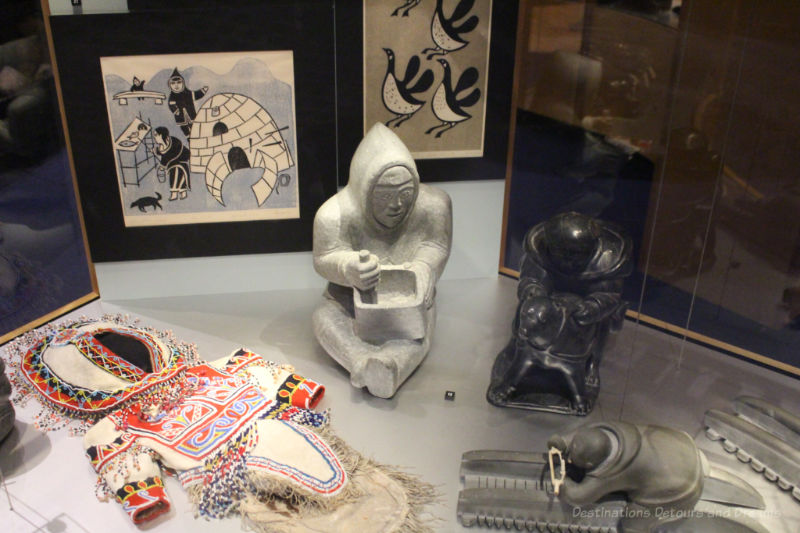
Nonsuch Gallery
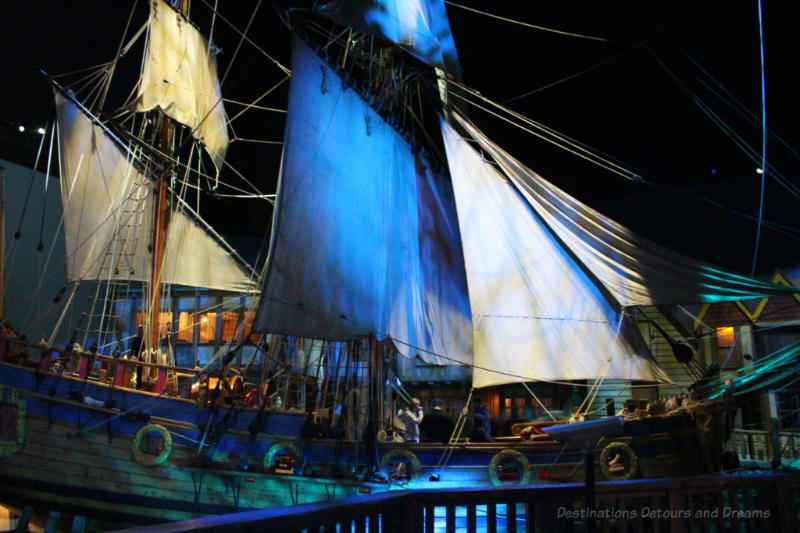
The Nonsuch was originally built as a merchant ship in 1650 and sailed from England in 1669 to trade in furs for the Hudson’s Bay Company. The Nonsuch replica on display in the museum was built in England in 1968 using hand tools of the 17th century and sailed to its new home in Manitoba.
In a small alcove just before the entrance to the Nonsuch Gallery you can listen to an oral history by Elder Louis Bird as he recounts a story of first contact between European settlers and the Cree. The recording can be played in English, French, or Cree.
In the gallery itself the Nonsuch appears moored at a wharf in Deptford, England recently returned from Hudson’s Bay with her cargo unloaded and stacked on the dock.
Winnipeg
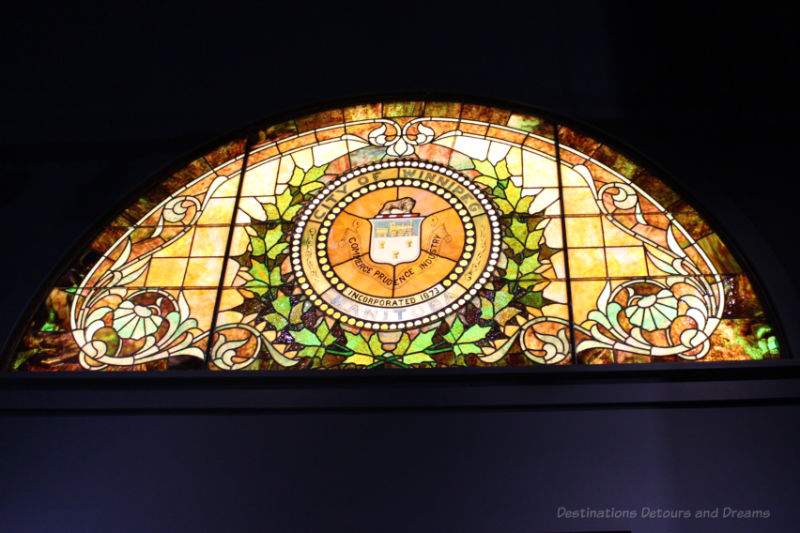
Winnipeg, located in southern Manitoba just 100 kilometres (62 miles) north of the United States border, is Manitoba’s capital. The city with a population of a little over 800,000 people is Manitoba’s largest city and contains more than half of the entire population of Manitoba. The city was incorporated in 1873.
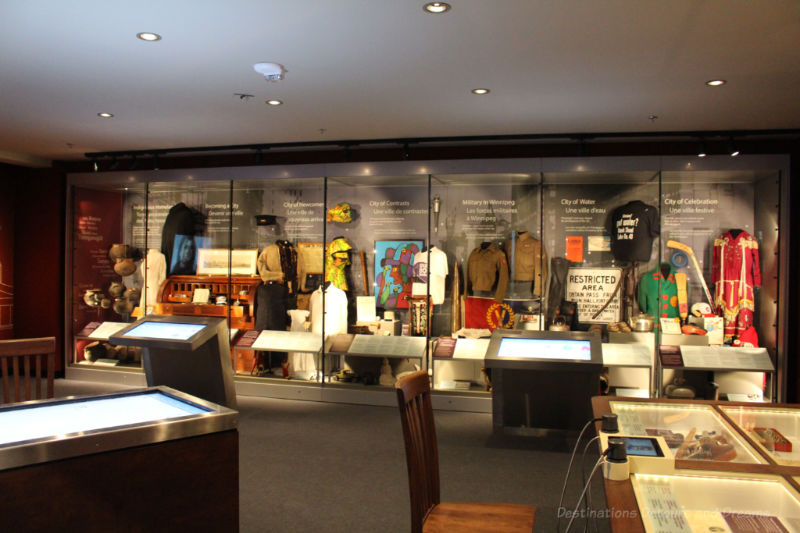
The Winnipeg Gallery explores the history of the city. There is a short timeline film presenting key events in that history. A seven-meter long display case explores Winnipeg by themes: Indigenous Homeland, Becoming a City, City of Newcomers, City of Contrasts, Military in Winnipeg, City of Water, and City of Celebration. Touchscreen tables in front of the display allow you to obtain more information about the themes and specific artifacts.
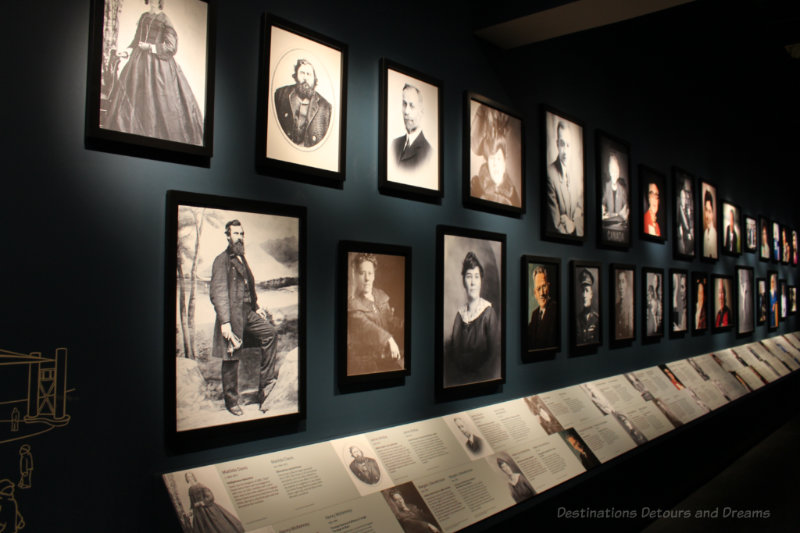
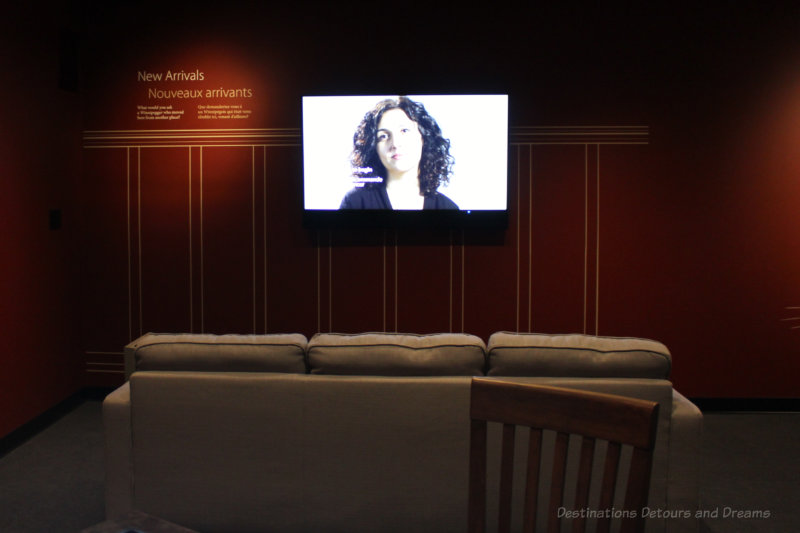
I found the stories of newcomers in the Winnipeg Gallery interesting. Sitting on a sofa I viewed newcomers tell their stories on a screen in front of me. I could select particular individuals and even narrow the viewing to answers to specific questions.
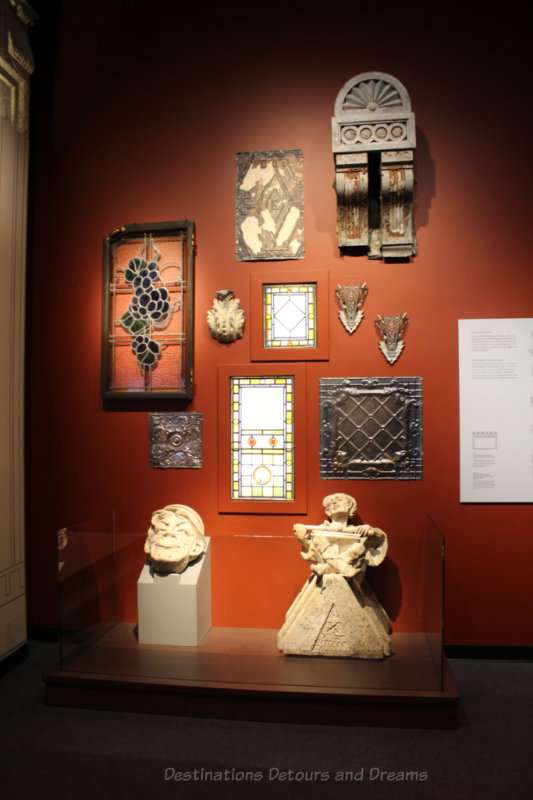
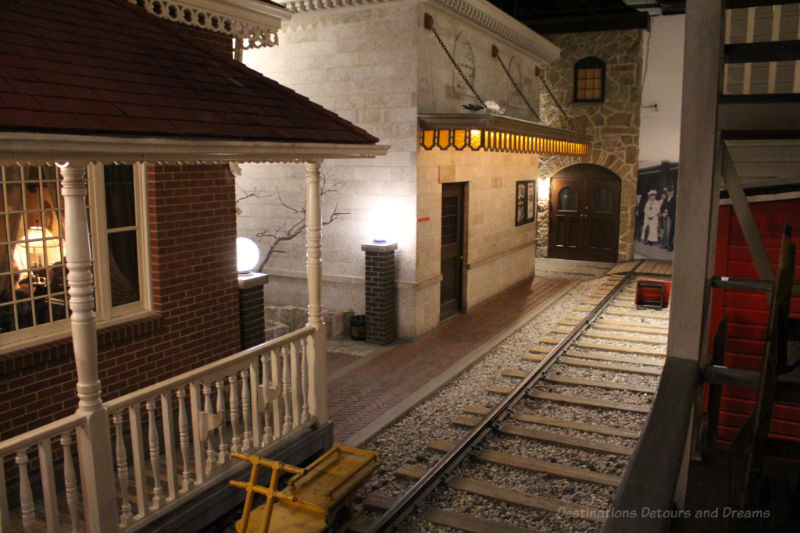
One of my favourite parts of the museum remains the recreation of Winnipeg in 1920. There are “streets” with shops and residences. You can enter shops and restaurants and see how they might have looked at that time. You can watch a Charlie Chaplin film at the cinema.
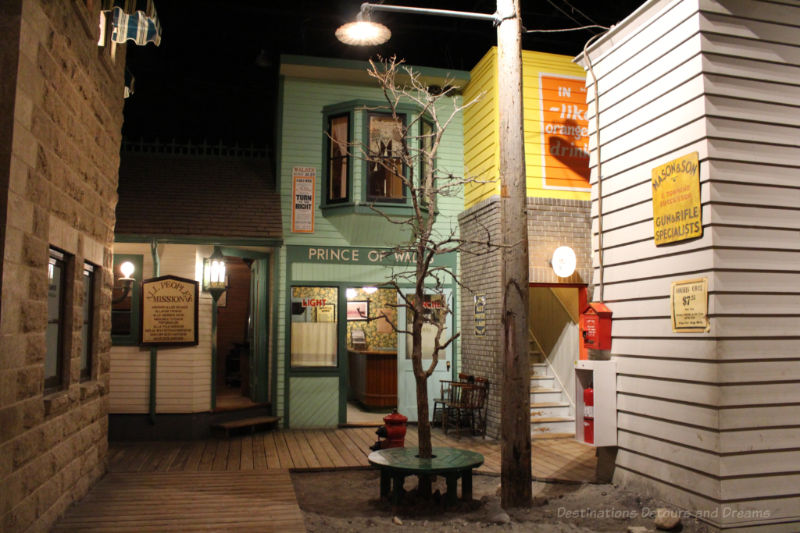
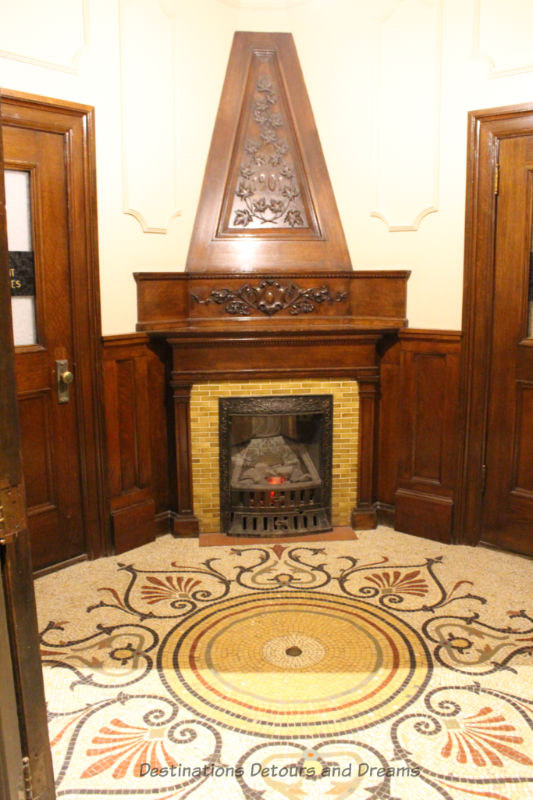
There is a lot to see at the Manitoba Museum. You can spend hours delving into interesting detail or skim through the surface in each gallery to get a general overview on Manitoba. You can make many return visits to learn more, see what’s been updated, or concentrate on one or two galleries.
Never miss a story. Sign up for Destinations Detours and Dreams free monthly e-newsletter and receive behind-the-scenes information and sneak peeks ahead.
PIN IT
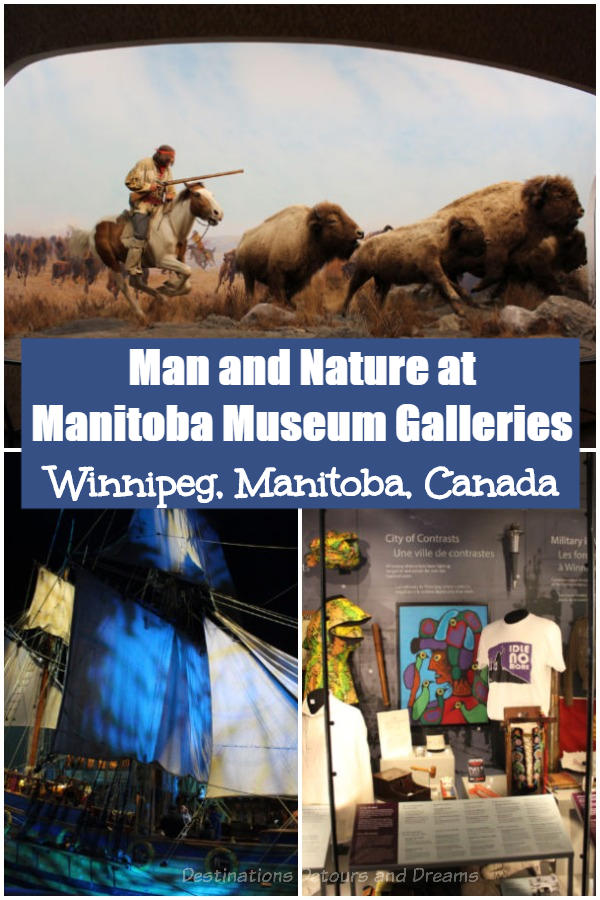

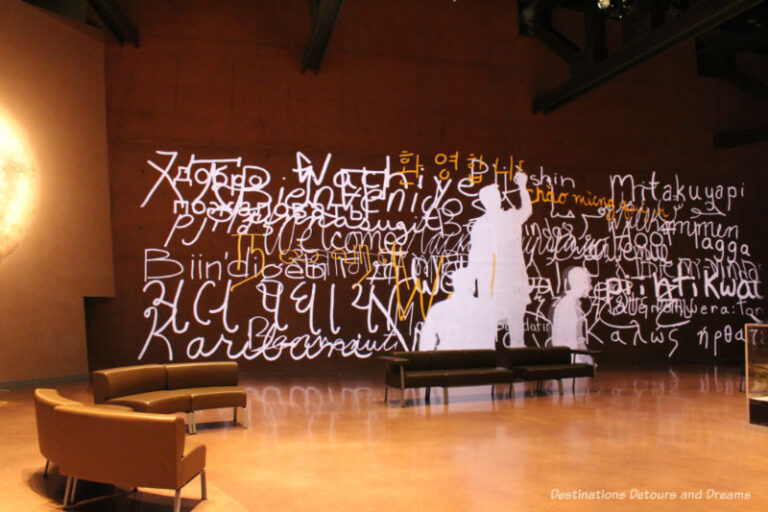
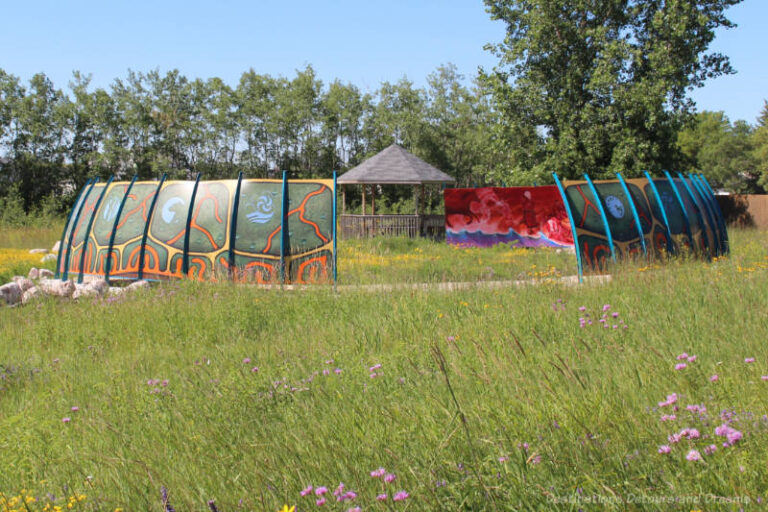
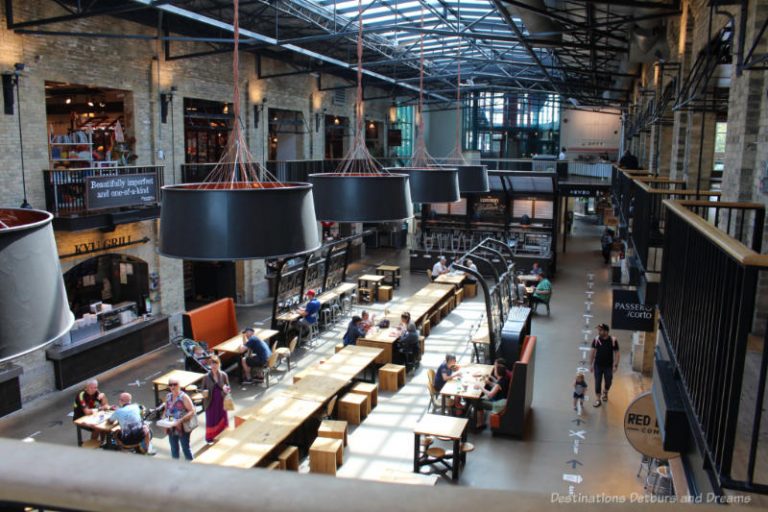
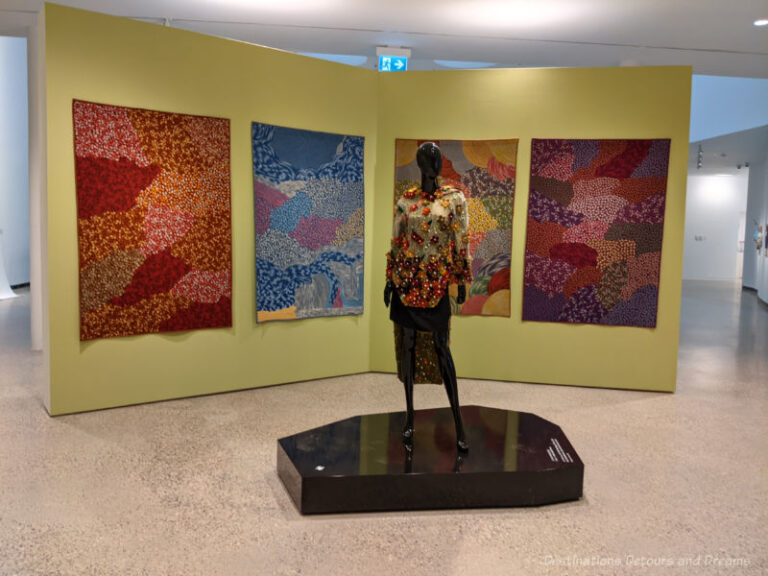
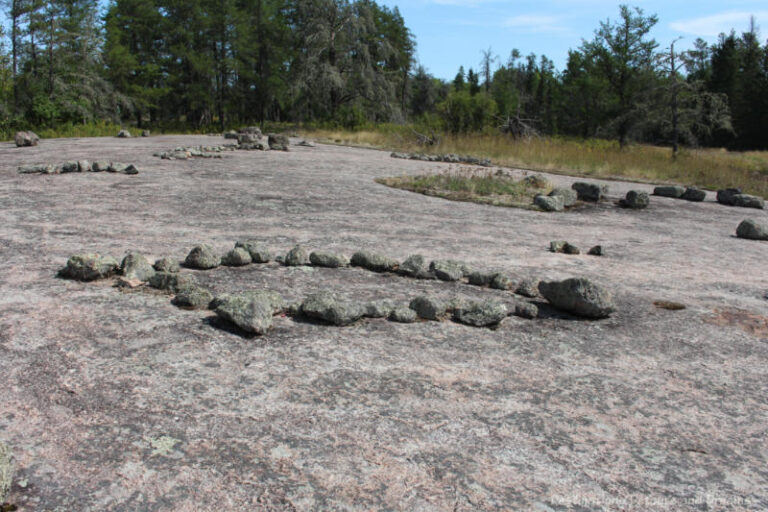
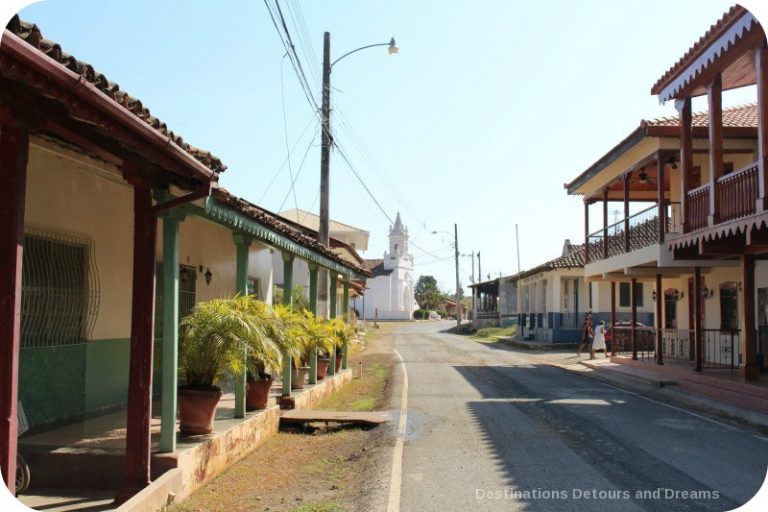
Must be nice just to be able to go to a museum. In this post, the Urban Gallery really caught my eye. What a great idea.
Ken, the Urban Gallery has long been a favourite part of this museum for me.
I would be most interested in n the Arctic/subArctic, HDC and Nonsuch Galleries. And I wonder if at the Urban Gallery, some of the newcomers featured are Filipinos.
Carol, I don’t remember specifically if any of the newcomers featured on the Story of Newcomers videos in the Winnipeg Gallery were Filipinos. I think one might have been. However, Winnipeg has a large Filipino community and there is other recognition of that in the museum. There is a Barong Tagalog dress shirt on display and one of the persons listed on the wall of prominent Winnipeg personalities is a Filipino immigrant recognized for her work in promoting multiculturalism. There may be something in other displays as well, but I don’t remember off hand.
The older I get, the more I am enjoying museum’s and this one would definitely be on my list if I ever get to the area. I loved that opening photo you used. It caught my eye on FB as well!! Most interesting post, Donna!
Thanks. That scene in the opening photo is one of the first things a visitor to the museum sees – a good entrance I think.
Looks as if you could spend all day in the Manitoba Museum! I hadn’t heard of the Métis Nation, so I’d be particularly interested by that section.
Karen, One could easily spend the better part of a day at the Manitoba Museum.
What an amazing museum you found in Manitoba. We have only begun exploring Canada, but have loved what we have found. Looks like we have another region to check out.
Hi, is there still the NANABUSH mural by Daphne Odjig at the entrance to the museum, just past the ticket office as you go in? During my childhood we had in the house a series of privately printed books by Daphne Odjig of the NANABUSH stories and I always found them compelling. I’m from Winnipeg originally and I also remember in the latter 1970s there was remarkable and visionarly environnmental degradation display about the damage pollution was doing to the world with a photographic cityscape and a central statue of a nude male figure wearing a breathing apparatus. It made an extraordinary impression on my young mind. I was wondering if you could, or anyone else could, tell me what happened to it? Are there any photos and might it still exist? Would be grateful to know.
Hi Edward. The “Creation of the World” mural by Daphne Odjig is on display at the end of the Welcome Gallery. It was restored in 2015. The museum published a blog post about the restoration. I’m afraid I don’t know anything about the environmental degradation display.
I made my dad take me to this museum once a month as a kid. It’s still my favourite and it’s just so well done. So much to see and it just never gets old. I’m 43 now and take my daughter whenever we come back to Winnipeg. Except don’t leave anything in your car. My windows got smashed out and my stuff robbed and it was Sunday morning!
Kristy, I am so sorry to hear your car was robbed while visiting the museum. There is a lot to see and appreciate at the museum, but that would certainly have tainted the experience.